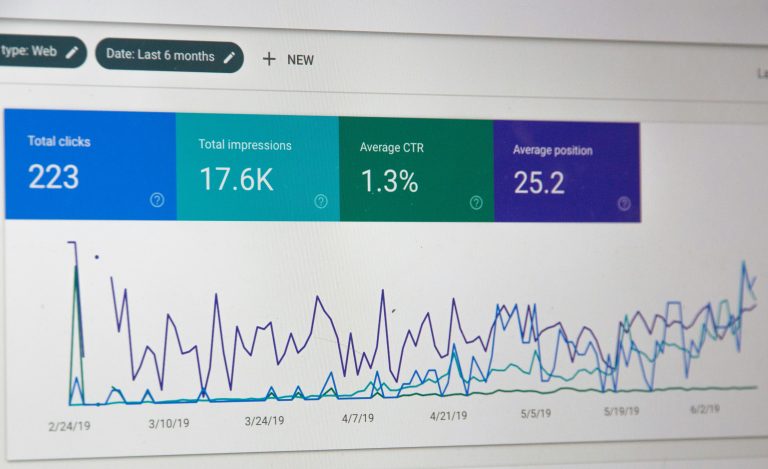The Ultimate Guide to Optimizing for User Intent
Introduction
As the digital landscape continues to evolve, understanding and optimizing for user intent has become a crucial aspect of successful online marketing strategies. In today’s fast-paced world, users demand relevant and tailored experiences that cater to their specific needs and expectations. By aligning your content and website with user intent, you can enhance user satisfaction, improve search engine rankings, and ultimately drive better business results.
This comprehensive guide will delve into the intricacies of user intent optimization, providing you with practical tips and strategies to ensure your online presence resonates with your target audience. From identifying search intent to crafting compelling content, we’ll cover all the essential elements that contribute to a seamless and engaging user experience.
Table of Contents
- Understanding User Intent
- Identifying Search Intent
- Analyzing the Search Engine Results Pages (SERPs)
- Crafting Content Aligned with User Intent
- Leveraging Structured Data and Rich Snippets
- Optimizing for Transactional Intent
- Optimizing for Informational Intent
- Optimizing for Navigational Intent
- Measuring and Refining Your User Intent Strategy
- Conclusion
Understanding User Intent
User intent, also known as search intent or keyword intent, refers to the underlying reason behind a user’s search query. It encompasses the specific goals, motivations, and expectations that drive a user to perform a particular search. Understanding user intent is crucial for creating a seamless and satisfying user experience, as it allows you to provide the most relevant and valuable information to your audience.
There are three main types of user intent:
- Informational Intent: Users searching with informational intent are seeking knowledge, answers to questions, or general information about a topic. Examples include searches like “how to change a tire,” “what is the capital of France,” or “best hiking trails near me.”
- Navigational Intent: Users with navigational intent are looking to visit a specific website or online destination. These searches often include brand names or website URLs, such as “Facebook,” “Amazon.com,” or “New York Times.”
- Transactional Intent (Commercial Intent): Users with transactional intent have the goal of making a purchase or completing a transaction. Searches like “buy running shoes online,” “book a hotel in Paris,” or “order pizza delivery” fall under this category.
By understanding the different types of user intent, you can tailor your content, website structure, and overall digital strategy to better meet the needs and expectations of your audience.
Identifying Search Intent
To effectively optimize for user intent, you must first identify the intent behind specific search queries. This process involves a combination of keyword research, search engine analysis, and understanding your target audience’s behavior and preferences.
Here are some effective strategies for identifying search intent:
- Utilize Keyword Research Tools: Tools like Google Keyword Planner, Ahrefs, SEMrush, and Moz provide valuable insights into search volumes, keyword suggestions, and intent classifications (informational, navigational, or transactional). Keyword research tools are helpful for getting strategies for top of funnel marketing.
- Analyze Search Engine Results Pages (SERPs): Examine the top-ranking pages for your target keywords. Pay attention to the type of content (e.g., blog posts, product pages, informational articles), format (e.g., lists, guides, videos), and overall user experience. This can help you identify the intent behind specific queries.
- Study User Behavior and Queries: Analyze your website’s search queries, user journey data, and customer feedback to gain insights into the intent behind the searches related to your products or services.
- Leverage Artificial Intelligence (AI) Tools: AI-powered tools like ChatGPT can assist in generating lists of likely search intents for a given topic or keyword. These tools can provide additional perspectives and help you cover a broader range of potential intents.
- Conduct User Surveys and Interviews: Engage with your target audience through surveys, focus groups, or one-on-one interviews to gain a deeper understanding of their search behavior, pain points, and motivations.
By combining these strategies, you can develop a comprehensive understanding of the various intents driving searches related to your business or industry.
Analyzing the Search Engine Results Pages (SERPs)
Analyzing the Search Engine Results Pages (SERPs) is a crucial step in optimizing for user intent. By examining the top-ranking pages for your target keywords, you can gain valuable insights into the type of content and formatting that best aligns with user expectations.
Here are some key aspects to consider when analyzing SERPs:
- Content Type: Identify the predominant types of content ranking for your target keywords, such as blog posts, product pages, informational articles, or videos. This can help you determine the most effective format for your content.
- Content Structure and Formatting: Observe how the top-ranking pages structure and present their information. Look for patterns in the use of headings, subheadings, bullet points, images, and other formatting elements.
- Featured Snippets and Rich Results: Pay attention to whether Google displays featured snippets, knowledge panels, or other rich results for your target queries. These can provide insights into the specific information users are seeking.
- Search Intent Alignment: Evaluate whether the top-ranking pages effectively address the user’s intent behind the search query. Look for gaps or opportunities to provide more comprehensive or tailored information.
- Backlinks and Authority: Analyze the backlink profiles and overall authority of the top-ranking pages. This can help you understand the level of expertise and trust required to rank well for specific queries.
- User Experience: Assess the overall user experience of the top-ranking pages, including factors like site speed, mobile-friendliness, and ease of navigation. A positive user experience can contribute to better rankings and user satisfaction.
By carefully analyzing the SERPs for your target keywords, you can gain a deeper understanding of the content, formatting, and user experience elements that align with user intent, enabling you to optimize your own pages accordingly.
Crafting Content Aligned with User Intent
Once you have identified the user intent behind your target keywords, it’s time to create content that effectively addresses those needs. Crafting content aligned with user intent involves a combination of strategic planning, writing techniques, and attention to detail.
Here are some best practices for creating content that resonates with user intent:
- Understand Your Target Audience: Develop a clear understanding of your target audience’s pain points, interests, and preferences. This will help you create content that directly addresses their needs and resonates with them on a deeper level.
- Plan Your Content Structure: Based on your analysis of the SERPs and user intent, outline the structure of your content. Use headings, subheadings, and formatting techniques that make it easy for users to scan and find the information they need.
- Provide Comprehensive and Valuable Information: Ensure that your content thoroughly addresses the user’s intent behind the search query. Aim to provide comprehensive, in-depth, and valuable information that exceeds the user’s expectations.
- Use Appropriate Language and Tone: Tailor your language and tone to match the user’s intent and level of expertise. For informational queries, use a more educational and explanatory tone, while for transactional queries, use a more persuasive and actionable tone.
- Incorporate Visuals and Multimedia: Enhance your content with relevant visuals, such as images, infographics, videos, or diagrams. These elements can help reinforce key points and improve the overall user experience.
- Optimize for On-Page SEO: While focusing on user intent, don’t neglect on-page SEO best practices. Incorporate relevant keywords, meta descriptions, and alt text for images to improve your chances of ranking well in search engine results.
- Encourage Engagement and Interaction: Include calls-to-action, interactive elements, or opportunities for user feedback and interaction. This can help build a stronger connection with your audience and improve overall engagement.
By crafting content that directly addresses user intent, you can provide a superior user experience, enhance engagement, and ultimately drive better results for your business.
Leveraging Structured Data and Rich Snippets
Structured data and rich snippets can play a crucial role in optimizing for user intent and improving your visibility in search engine results. By providing additional context and information about your content, you can enhance the user experience and increase the chances of your pages appearing as rich results in SERPs.
Here’s how you can leverage structured data and rich snippets for user intent optimization:
- Implement Schema.org Markup: Schema.org is a collaborative effort by major search engines to standardize structured data markup. By adding schema markup to your website’s HTML, you can provide search engines with additional information about your content, such as product details, event information, or frequently asked questions (FAQs).
- Optimize for Featured Snippets: Featured snippets are highly visible and prominent results that appear at the top of SERPs, providing a direct answer to a user’s query. To optimize for featured snippets, structure your content in a clear and concise manner, using headings and paragraphs that directly address the user’s intent.
- Leverage Rich Results: Rich results, such as knowledge panels, carousels, and enhanced search result listings, can make your content stand out in SERPs and provide users with more detailed information upfront. By implementing structured data and following best practices, you can increase the chances of your content being displayed as rich results.
- Use Relevant Markup Types: Depending on your content and user intent, choose the appropriate structured data markup types. For example, if you have a product page, use the “Product” markup type; for a recipe, use the “Recipe” markup; and for a local business, use the “LocalBusiness” markup.
- Test and Validate Your Markup: Use tools like Google’s Structured Data Testing Tool or third-party validators to ensure that your structured data markup is correctly implemented and follows the recommended guidelines.
By leveraging structured data and rich snippets, you can provide search engines with more context about your content, improve your visibility in SERPs, and enhance the overall user experience for your target audience.
Optimizing for Transactional Intent
When users have transactional intent, they are actively seeking to make a purchase or complete a specific transaction. Optimizing for transactional intent is crucial for e-commerce businesses, service providers, and any website that aims to drive conversions or sales.
Here are some strategies to optimize for transactional intent:
- Optimize Product Pages: Ensure that your product pages are well-structured, visually appealing, and provide all the necessary information a user might need to make an informed purchase decision. This includes detailed product descriptions, high-quality images, pricing information, and customer reviews.
- Include Clear Calls-to-Action (CTAs): Use prominent and compelling calls-to-action throughout your website, encouraging users to take the desired action, such as “Buy Now,” “Add to Cart,” or “Book Now.” Make sure these CTAs are easily visible and accessible.
- Highlight Special Offers and Promotions: If you have any special offers, discounts, or promotions, make sure to highlight them prominently on your website. Users with transactional intent are often looking for the best deal or value proposition.
- Optimize for Local and Mobile Search: With the rise of mobile and local search, it’s essential to optimize your website for users searching for products or services near their location. Implement local SEO strategies and ensure your website is mobile-friendly and responsive.
- Use Persuasive and Actionable Language: In your product descriptions and messaging, use persuasive and actionable language that encourages users to take the desired action. Highlight the benefits, unique selling points, and value propositions of your products or services.
- Showcase Customer Reviews and Testimonials: Social proof and customer reviews can be powerful motivators for users with transactional intent. Prominently display positive reviews, testimonials, and ratings to build trust and credibility with potential customers.
- Optimize for Transactional Keywords: Conduct keyword research to identify transactional keywords that signal a user’s intent to make a purchase. These may include phrases like “buy,” “order,” “purchase,” or specific product names and models.
By optimizing your website and content for transactional intent, you can increase conversions, drive more sales, and provide a seamless and satisfying experience for users who are ready to make a purchase.
Optimizing for Informational Intent
When users have informational intent, they are seeking knowledge, answers to questions, or general information about a particular topic. Optimizing for informational intent is essential for building authority, establishing trust, and providing valuable resources to your target audience.
Here are some strategies to optimize for informational intent:
- Create High-Quality, In-Depth Content: Develop comprehensive and informative content that thoroughly addresses the user’s query. This can include blog posts, guides, tutorials, or educational resources. Ensure that your content is well-researched, accurate, and provides valuable insights.
- Structure Content for Easy Comprehension: Use clear headings, subheadings, bullet points, and other formatting techniques to make your content easy to scan and digest. Break down complex topics into bite-sized sections and provide visual aids, such as images or videos, to enhance understanding.
- Leverage Frequently Asked Questions (FAQs): Identify common questions and pain points related to your industry or topic, and create dedicated FAQ sections or pages to address them. This can help you directly answer user queries and provide valuable information in a concise manner.
- Incorporate Relevant Keywords: Conduct keyword research to identify informational keywords and phrases that align with your content. Incorporate these keywords naturally throughout your content, while avoiding keyword stuffing or over-optimization.
- Establish Expertise and Authority: Showcase your expertise and authority on the subject matter by highlighting author bios, credentials, and relevant experience. Additionally, cite reputable sources and include expert quotes or contributions to reinforce your credibility.
- Encourage Engagement and Discussion: Include opportunities for users to engage with your content, such as comment sections, social media sharing buttons, or forums. This can foster a sense of community, encourage discussions, and provide additional insights and perspectives.
- Optimize for Featured Snippets: Structure your content in a way that makes it eligible for featured snippets in SERPs. Use clear and concise paragraphs or lists to directly answer common questions or queries related to your topic.
By optimizing your content for informational intent, you can position yourself as a trusted authority in your industry, provide valuable resources to your audience, and ultimately build a stronger connection with your target market.
Optimizing for Navigational Intent
Users with navigational intent are typically searching for a specific website or online destination. Optimizing for navigational intent can help improve brand visibility, enhance user experience, and facilitate easy access to your online presence.
Here are some strategies to optimize for navigational intent:
- Optimize for Brand Searches: Ensure that your website ranks well for searches related to your brand name, product names, or service offerings. This can involve on-page optimization, building high-quality backlinks, and maintaining a strong online presence.
- Simplify Website Navigation: Make it easy for users to navigate your website and find the information or resources they’re looking for. Implement a clear and intuitive site structure, with logical menu organization and prominent search functionality.
- Leverage Sitelinks and Breadcrumb Navigation: Optimize for sitelinks in search engine results, which provide quick access to important pages on your website. Additionally, implement breadcrumb navigation on your website to help users understand their current location and navigate back to higher-level pages easily.
- Enhance Brand Awareness: Invest in brand awareness campaigns, both online and offline, to increase the likelihood of users searching for your brand directly. This can include social media marketing, content marketing, and traditional advertising efforts.
- Optimize for Local and Voice Search: If your business has a local presence, optimize for local search by claiming and optimizing your Google My Business listing. Additionally, optimize for voice search by using natural language and incorporating common queries and phrases related to your brand or location.
- Monitor and Respond to Brand Mentions: Stay vigilant about brand mentions and online discussions related to your business. Respond promptly to queries, comments, and feedback to maintain a strong brand presence and reputation.
- Leverage Paid Advertising: Consider investing in paid advertising campaigns, such as Google Ads or social media ads, to increase brand visibility and capture users with navigational intent who may not be familiar with your brand.
By optimizing for navigational intent, you can improve brand recognition, facilitate easy access to your online presence, and provide a seamless experience for users who are specifically searching for your brand or website.
Measuring and Refining Your User Intent Strategy
Optimizing for user intent is an ongoing process that requires continuous monitoring, analysis, and refinement. To ensure the success of your user intent strategy, it’s essential to measure its effectiveness and make data-driven adjustments as needed.
Here are some key metrics and techniques to help you measure and refine your user intent strategy:
- Google Analytics and Search Console Data: Analyze your website’s traffic data, including pageviews, bounce rates, and conversion rates, to understand how users are interacting with your content. Use Google Analytics and Google Search Console to track your rankings for specific keywords and identify areas for improvement.
- User Engagement Metrics: Monitor metrics such as time on page, scroll depth, and click-through rates to gauge user engagement and interest in your content. Low engagement levels may indicate a misalignment between your content and user intent.
- Conversion Tracking: Set up conversion tracking to monitor the effectiveness of your transactional and lead generation efforts. Analyze conversion rates for specific user intent types and identify areas for improvement.
- User Feedback and Surveys: Collect direct feedback from your target audience through surveys, user testing, or feedback forms. This qualitative data can provide valuable insights into how well your content and website are meeting user needs and expectations.
- Heatmaps and Session Recordings: Utilize heatmapping tools and session recording software to visualize how users interact with your website and content. These tools can help identify friction points, areas of confusion, or opportunities for optimization.
- Competitor Analysis: Regularly monitor your competitors’ strategies, content, and online presence. Identify areas where they may be outperforming you in terms of user intent optimization, and use those insights to refine your own approach.
- Continuous Keyword Research and Content Audits: Periodically review your target keywords and content to ensure they remain relevant and aligned with evolving user intent trends. Update your content and keyword strategy as needed to stay ahead of the curve.
- Collaboration with Subject Matter Experts: Work closely with subject matter experts, industry professionals, and experienced content creators to ensure that your content accurately addresses user intent and provides valuable, authoritative information.
By consistently measuring and analyzing the effectiveness of your user intent strategy, you can make data-driven decisions to refine your approach, optimize your content, and continually improve the overall user experience for your target audience.
Conclusion
Optimizing for user intent is a critical aspect of successful online marketing and search engine optimization. By understanding and catering to the specific needs and motivations of your target audience, you can create a seamless and engaging user experience that drives better results for your business.
Throughout this comprehensive guide, we’ve explored various strategies and best practices for identifying search intent, analyzing SERPs, crafting content aligned with user intent, leveraging structured data and rich snippets, and optimizing for different types of intent, including transactional, informational, and navigational.
Remember, user intent optimization is an ongoing process that requires continuous monitoring, analysis, and refinement. Regularly measure your performance, gather user feedback, and stay up-to-date with evolving trends and best practices to ensure your strategy remains effective and relevant.
By prioritizing user intent in your digital marketing efforts, you can improve search engine rankings, increase user engagement and conversions, and ultimately build a stronger, more loyal audience for your brand or business.







